Name Saint Maurus | Died January 15, 584 AD, Gaul | |
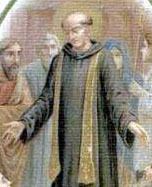 | ||
Feast after 1969: November 22 Attributes Patronage cripples; invoked against rheumatism, epilepsy, gout, hoarseness, cold; Azores; charcoal burners; cobblers; coppersmiths; shoemakers Similar People Saint Placidus, Pope Leo I, Pope Clement I, Pope Sixtus III, Pope Honorius III | ||
Saint maurus of p cs
Saint Maurus, O.S.B. (or Maur), was the first disciple of Saint Benedict of Nursia (512-584). He is mentioned in Saint Gregory the Great's biography of the latter as the first oblate; offered to the monastery by his noble Roman parents as a young boy to be brought up in the monastic life. Four stories involving Maurus recounted by Gregory formed a pattern for the ideal formation of a Benedictine monk. The most famous of these involved Saint Maurus's rescue of Saint Placidus, a younger boy offered to Saint Benedict at the same time as Saint Maurus. The incident has been reproduced in many medieval and Renaissance paintings.
Contents
- Saint maurus of p cs
- Jan 15 Saint Maurus Abbot 0584 France
- The Legendary Life of Saint Maurus
- References

Saints Maurus and Placidus are venerated together on 5 October.
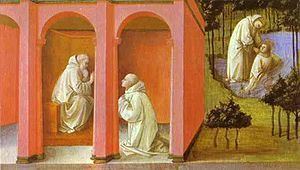
Jan 15 - Saint Maurus - Abbot - 0584 - France
The Legendary Life of Saint Maurus
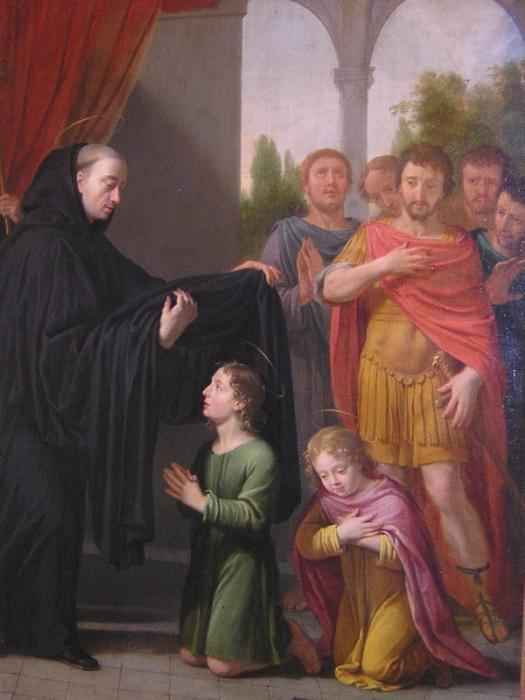
A long Life of St. Maurus appeared in the late 9th century, supposedly composed by one of Saint Maurus's 6th-century contemporaries. According to this account, the bishop of Le Mans, in western France, sent a delegation asking Benedict for a group of monks to travel from Benedict's new abbey of Monte Cassino to establish monastic life in France according to the Rule of St. Benedict. The Life recounts the long journey of Saint Maurus and his companions from Italy to France, accompanied by many adventures and miracles as Maurus is transformed from the youthful disciple of Benedict into a powerful, miracle-working holy man in his own right. According to this account, after the great pilgrimage to Francia, Saint Maurus founded Glanfeuil Abbey as the first Benedictine monastery in Gaul. It was located on the south bank of the Loire river, a few miles east of Angers. The nave of its thirteenth-century church and some vineyards remain today (according to tradition, the chenin grape was first cultivated at this monastery.)

Scholars now believe that this Life of Maurus is a forgery by the late-9th-century abbot of Glanfeuil, Odo. It was composed, as were many such saints' lives in Carolingian France, to popularize local saints' cults. The bones of Saint Maurus were 'discovered' at Glanfeuil by one of Abbot Odo's immediate predecessors, Abbot Gauzlin, in 845. Gauzlin likely invented or at least strongly promoted the cult of Benedict's disciple, taking advantage of Glanfeuil's proximity to two famous and prosperous Benedictine culture centers of the Loire region: the cult of Saint Benedict's bones at Fleury and that of Saint Scholastica's relics at Le Mans.
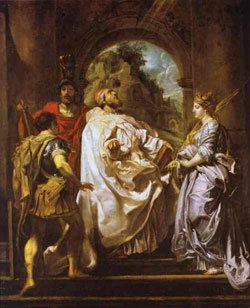
In 862, Odo and the monks of Glanfeuil were obliged to flee to Paris in the face of Vikings maurauding along the Loire. There the cult of Saint Maurus was revived at the suburban Parisian abbey of Saint-Pierre-des-Fossés, later renamed Saint-Maur-des-Fossés. The cult of Saint Maurus slowly spread to monasteries throughout France and by the 11th century had been adopted by Monte Cassino in Italy, along with a revived cult of Saint Placidus (the fellow pupil of Saint Benedict at Monte Cassino along with Saint Maurus, according to Pope Gregory the Great's Life of Saint Benedict). By the late Middle Ages, the cult of Saint Maurus, often associated with that of Saint Placidus, had spread to all Benedictine monasteries.
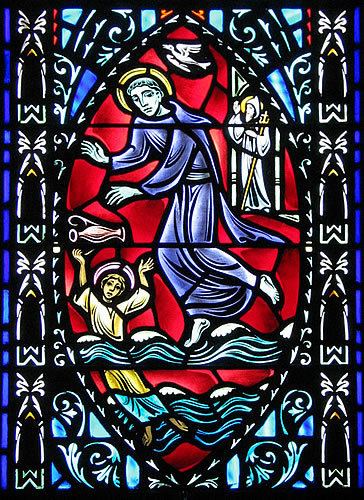
The Congregation of St. Maur took its name from him.
In the 18th century, after the decline of the abbey of Fosses, the cult of Saint Maurus was moved to the Abbey of Saint-Germain-des-Prés where it remained a popular center until the relics were dispersed by a Parisian mob during the French Revolution. Saint Maurus is still venerated by Benedictine congregations today, many monks adopting his name and dedicating monasteries to his patronage.
In art, he is depicted as a young man in the garb of a monk, usually holding an abbot's cross or sometimes with a spade (an allusion to the monastery of Saint-Maur-des-Fossés, literally "Saint Maurus of the Ditches").
Another of Saint Maurus' attributes is a crutch, in reference to his patronage of cripples. He was invoked especially against fever, and also against rheumatism, epilepsy, and gout. He is also sometimes depicted with a scale, a reference to the implement used to measure a monk's daily ration of bread, given to him by Benedict when he left Montecassino for France. The monks of Fossés near Paris (whence the community of Glanfeuil had fled from the Vikings in 868) exhibited this implement throughout the Middle Ages.
